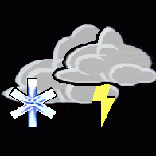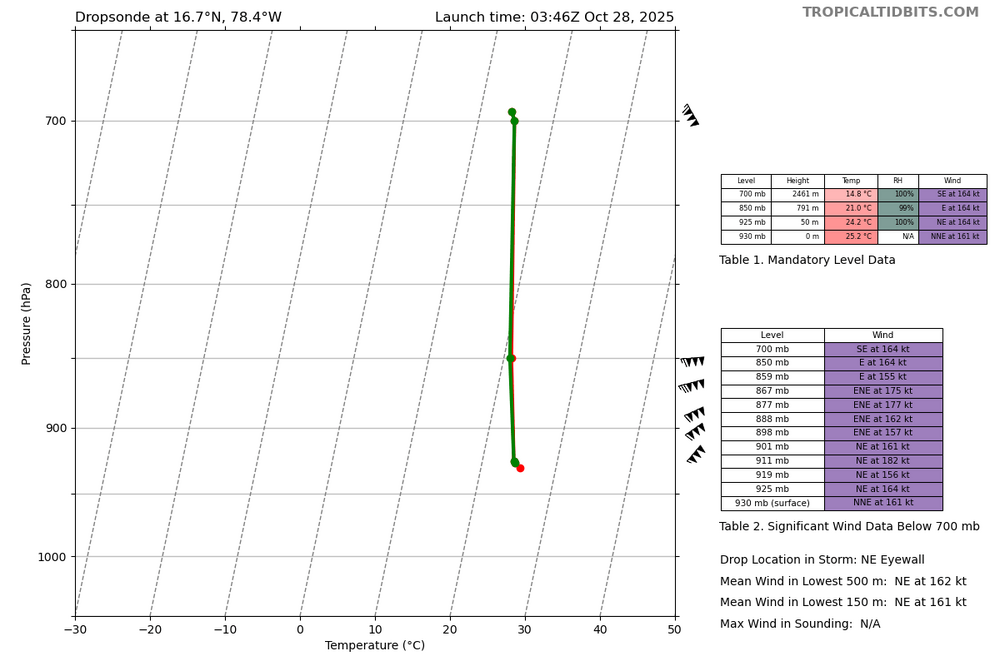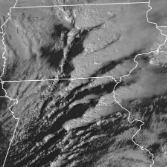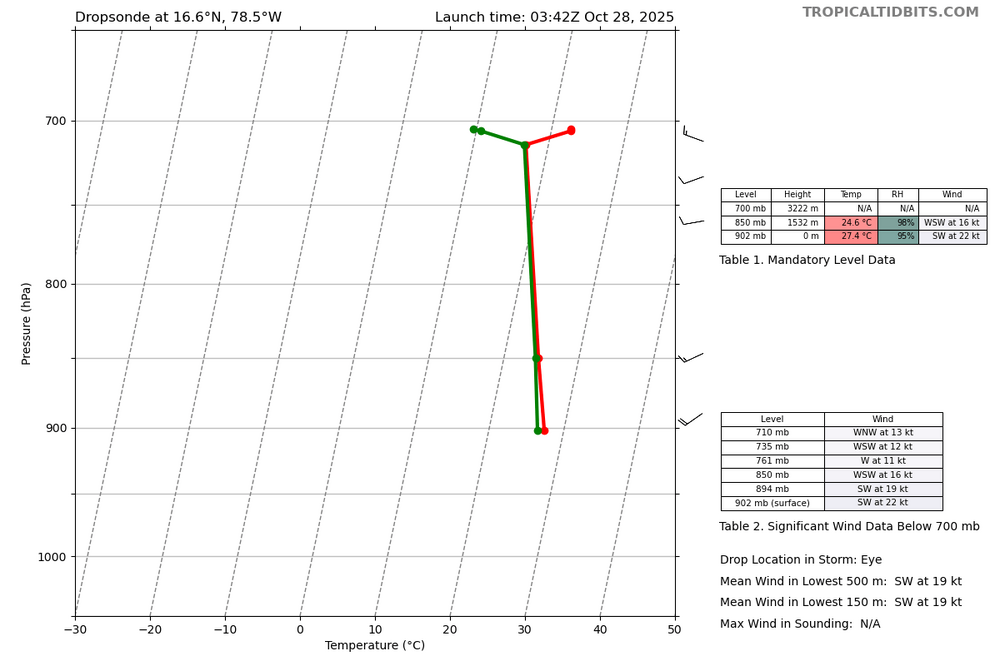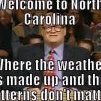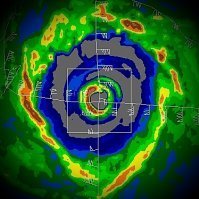All Activity
- Past hour
-

Major Hurricane Melissa - 903mb - 175mph
Floydbuster replied to GaWx's topic in Tropical Headquarters
Reading around, I see that Hurricane Melissa could be the return period storm for the October 1780 "Savanna la Mar hurricane". 3,000 deaths were attributed to the storm just a week or so before the deadliest hurricane in Atlantic History hit the eastern Caribbean. Note the similar track. I wonder if Melissa is the 245 year return period storm for Jamaica. -

Major Hurricane Melissa - 903mb - 175mph
hawkeye_wx replied to GaWx's topic in Tropical Headquarters
Final recon pass is 902 mb.... not going to get sub-900 for now. -
Mind boggling. There are certain systems that defy the norms. This is def one of them. Not sure people are prepared for the scenes that will be coming out of Jaimaca. They've dogged the bullet so many times. Not this one.
-
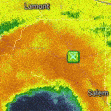
Major Hurricane Melissa - 903mb - 175mph
WxWatcher007 replied to GaWx's topic in Tropical Headquarters
Agree. Probably somewhere between 898-901mb and 155-160kt. Really glad they're going in for another pass. -
Intermediate at 2 eastern 1 central
-

Major Hurricane Melissa - 903mb - 175mph
Floydbuster replied to GaWx's topic in Tropical Headquarters
I am guessing about 180-185 mph is quite possibly the current intensity. -

Major Hurricane Melissa - 903mb - 175mph
hawkeye_wx replied to GaWx's topic in Tropical Headquarters
It does appear recon is going in for one more pass. -
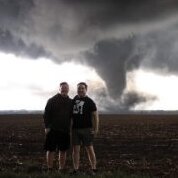
Major Hurricane Melissa - 903mb - 175mph
Radtechwxman replied to GaWx's topic in Tropical Headquarters
They going to do an intermediate advisory or wait till next main one at 5am? -

Major Hurricane Melissa - 903mb - 175mph
Floydbuster replied to GaWx's topic in Tropical Headquarters
So would Melissa be 190 mph sustained now? -

Major Hurricane Melissa - 903mb - 175mph
WxWatcher007 replied to GaWx's topic in Tropical Headquarters
Not sure off the top of my head. -
Another thing to be reminded of... Much of Jamaica is well above sea level. For example, Mandeville (which could get raked by the eastern eyewall) has a population of 47,000 people or so and is at an elevation of 620 meters (2,000 feet). So I would absolutely expect higher gusts in those locations
-

Major Hurricane Melissa - 903mb - 175mph
WxWatcher007 replied to GaWx's topic in Tropical Headquarters
Product: Air Force Vortex Message (URNT12 KNHC)Transmitted: 28th day of the month at 4:06ZAgency: United States Air ForceAircraft: Lockheed WC-130J Hercules with reg. number AF96-5301Storm Name: MelissaStorm Number & Year: 13 in 2025 (flight in the North Atlantic basin)Mission Number: 22Observation Number: 28 ( See all messages of this type for this mission. )A. Time of Center Fix: 28th day of the month at 3:42:00ZB. Center Fix Coordinates: 16.65N 78.52WB. Center Fix Location: 147 statute miles (237 km) to the SW (230°) from Kingston, Jamaica.C. Minimum Height at Standard Level: 2,247m (7,372ft) at 700mbD. Minimum Sea Level Pressure: 902mb (26.64 inHg)E. Dropsonde Surface Wind at Center: From 220° at 22kts (From the SW at 25mph)F. Eye Character: ClosedG. Eye Shape & Diameter: Circular with a diameter of 10 nautical miles (12 statute miles)H. Estimated (by SFMR or visually) Maximum Surface Wind Inbound: 164kts (188.7mph)I. Location & Time of the Estimated Maximum Surface Wind Inbound: 3 nautical miles to the N (4°) of center fix at 3:40:30ZJ. Maximum Flight Level Wind Inbound: From 97° at 152kts (From the E at 174.9mph)K. Location & Time of the Maximum Flight Level Wind Inbound: 4 nautical miles to the N (4°) of center fix at 3:40:00ZL. Estimated (by SFMR or visually) Maximum Surface Wind Outbound: 160kts (184.1mph)M. Location & Time of the Estimated Maximum Surface Wind Outbound: 6 nautical miles to the ENE (58°) of center fix at 3:46:30ZN. Maximum Flight Level Wind Outbound: From 154° at 165kts (From the SSE at 189.9mph)O. Location & Time of the Maximum Flight Level Wind Outbound: 7 nautical miles to the ENE (58°) of center fix at 3:47:00ZP. Maximum Flight Level Temp & Pressure Altitude Outside Eye: 10°C (50°F) at a pressure alt. of 3,052m (10,013ft)Q. Maximum Flight Level Temp & Pressure Altitude Inside Eye: 22°C (72°F) at a pressure alt. of 3,049m (10,003ft)R. Dewpoint Temp (collected at same location as temp inside eye): 14°C (57°F)R. Sea Surface Temp (collected at same location as temp inside eye): Not AvailableS. Fix Determined By: Penetration, Radar, Wind, Pressure and TemperatureS. Fix Level: 700mbT. Navigational Fix Accuracy: 0.02 nautical milesT. Meteorological Accuracy: 1 nautical mileRemarks Section: Maximum Flight Level Wind: 165kts (~ 189.9mph) which was observed 7 nautical miles to the ENE (58°) from the flight level center at 3:47:00Z -

Major Hurricane Melissa - 903mb - 175mph
Maestrobjwa replied to GaWx's topic in Tropical Headquarters
When's the last time that happened this close to landfall? -
-
Rumor is they're gonna do one more pass.
-

Major Hurricane Melissa - 903mb - 175mph
WxWatcher007 replied to GaWx's topic in Tropical Headquarters
That was a big time dropsonde in the NE eyewall. Given the pressure falls and FL wind this is probably stronger than the current advisory. -

Major Hurricane Melissa - 903mb - 175mph
hawkeye_wx replied to GaWx's topic in Tropical Headquarters
Ugh.... I was hoping for 899 mb on this final recon pass. The FL wind is also 165 kts now. - Today
-

Major Hurricane Melissa - 903mb - 175mph
WxWatcher007 replied to GaWx's topic in Tropical Headquarters
Latest sonde: 902mb w/ 22kt wind. Melissa is on the cusp of going sub 900mb. -
Up to 2.10 for the event. Still raining moderately here
-
One final pass. Looks like it's going to be a N to S penetration before heading back to base.
-
Stall to wobble north.
-
Yeah the fall foliage isn't nearly as nice as usual this year. Obviously the drought had a very negative effect. A shame that we went so dry for months after the tremendous flooding in mid July. We just don't get normal rainfall anymore -- it's either way too much or not nearly enough.
-
With today's climate and also a plethora of variables im not so sure about a cold November leads to a cold winter. Last November was pretty warm for many and we then had one of the coldest January's on average in about 30 years. I think we actually see a mixed bag this winter to average things out in my opinion.

